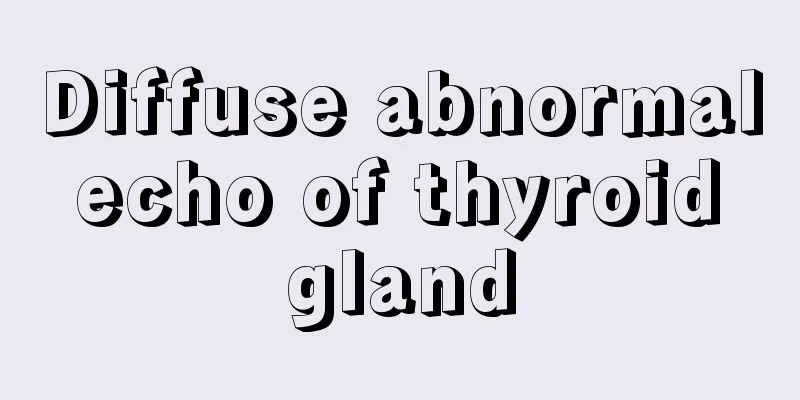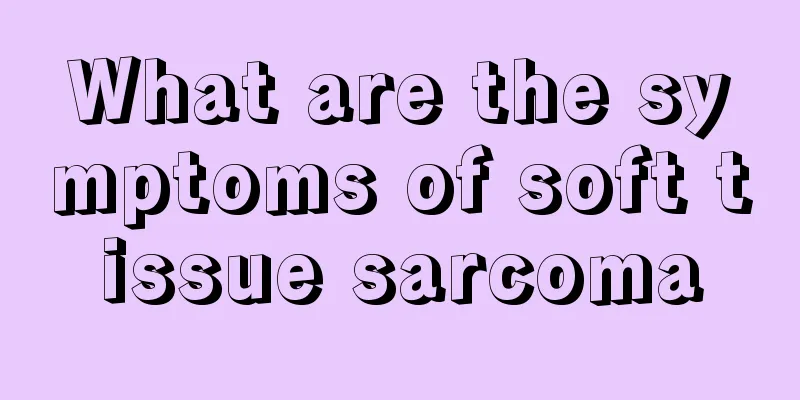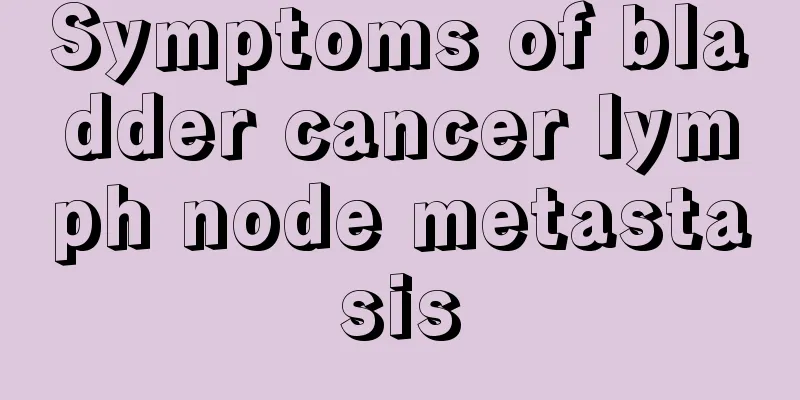Diffuse abnormal echo of thyroid gland

|
The thyroid gland can be said to be the most important gland in the body's endocrine system. The thyroid gland controls hormones and metabolism in the body. If you have a thyroid disease, your body's metabolism will be disrupted. Diffuse echo of the thyroid gland is a condition often encountered during thyroid ultrasound examination. What does it mean if the diffuse echo of the thyroid gland is abnormal? Let’s take a look below. Thyroid ultrasound examination is a commonly used method for health examination and disease diagnosis, but the report contains hidden secrets. It is common to see patients holding a thyroid ultrasound examination report that states "thyroid echo is uneven and presents diffuse lesions" and asking their doctors with a worried face whether this is cancer. The description of "diffuse lesions" appears in the thyroid ultrasound examination reports provided by many hospitals. This is usually not thyroid cancer, but most likely Hashimoto's thyroiditis (also known as chronic lymphocytic thyroiditis). Hashimoto's thyroiditis is a common autoimmune disease that occurs more frequently in middle-aged women. The basic pathological changes of the thyroid gland are the infiltration of a large number of lymphocytes and the existence of a chronic, autoimmune inflammatory process. During an ultrasound examination, the thyroid gland lost its normal image. This image change can manifest as changes in the shape and size of the thyroid gland, showing diffuse enlargement with clear boundaries, or as thickening of light spots, uneven echoes, and disordered echo structures. Sometimes some tiny nodular changes can be found in the thyroid gland. These so-called nodules can be single or multiple and are usually only a few millimeters in size. Ultrasound findings may vary at different stages of the disease. These changes can exist individually or simultaneously. It can occur locally in the thyroid gland or throughout the entire thyroid gland, resulting in the so-called "diffuse thyroid disease". When patients receive an ultrasound report like the one mentioned above, there is no need to panic. The first thing they should do is to test their blood for thyroid hormones and antibodies. Since Hashimoto's thyroiditis is very common in clinical practice, if laboratory tests reveal a significantly increased level of thyroid peroxidase antibodies and thyroglobulin antibodies, regardless of whether there are changes in hormone levels associated with hypothyroidism, it can be indicated that the patient has Hashimoto's thyroiditis. If the patient also has other autoimmune diseases such as rheumatoid arthritis and type 1 diabetes, the diagnosis of Hashimoto's thyroiditis is more supportive. However, if the ultrasound report describes the presence of nodules in the thyroid gland with irregular shapes, unclear boundaries, uneven internal echoes, calcification, and enlarged cervical lymph nodes, further examination should be performed. At this point, regardless of whether the nodules are single or multiple, thyroid cancer needs to be ruled out. In fact, Hashimoto's thyroiditis combined with thyroid cancer, especially microcancer, is not uncommon in clinical practice. Surveillance data reported from the United States show that the incidence of thyroid cancer increased by 2 times from 2001 to 2013, and many patients have coexisting Hashimoto's thyroiditis and thyroid cancer. It is worth noting that a significantly increased level of serum thyroid peroxidase antibodies and thyroglobulin antibodies is a sign of autoimmune dysfunction of the thyroid gland, not a sign of thyroid cancer. The serum tumor marker (CEA) is negative in the vast majority of thyroid cancer patients, and thyroid cancer patients are unlikely to experience symptoms such as weight loss and pain. Therefore, if thyroid cancer is suspected, further examinations should be conducted, including thyroid radioactive iodine scanning, CT, MRI and other imaging examinations, as well as thyroid fine needle aspiration cytology, among which fine needle aspiration cytology is the most accurate assessment. In short, the so-called "diffuse lesions" in the ultrasound report are usually not thyroid cancer, but how to interpret it correctly still requires the doctor's advice. |
<<: Diffuse echogenic changes in the thyroid gland
>>: Can I take medicine with honey water?
Recommend
What is the problem with athlete's foot
Athlete's foot is what we call Hong Kong'...
How to treat menopausal insomnia
Menopause is a process that everyone will go thro...
Can I get pregnant if I have sex 18 days after an abortion?
Women who have had an abortion want to resume the...
Why is my mouth suddenly crooked?
Many people will encounter some sudden illnesses ...
What foods can prevent liver cancer? Eat these foods to prevent liver cancer
Liver cancer is extremely harmful, I believe ever...
What is the role of ultrasound contrast imaging for liver cancer? Analysis of the diagnostic role of ultrasound contrast imaging for liver cancer
Ultrasound contrast imaging of liver cancer, also...
What medicine to use after bladder cancer surgery to prevent recurrence
How should patients with bladder cancer prevent r...
How to treat subacute dermatitis
Dermatitis is a very common skin problem in our l...
Chin augmentation surgery
There are many ways for people to become beautifu...
What are the principles of potassium supplementation? These precautions must be mastered!
Potassium supplementation is something that every...
How to choose a facial mask
As the human body ages, many of its functions dec...
How to remedy a low nose bridge
The so-called bridge of the nose is the root of t...
What should I do if my ears are blocked by water
The function of the ears is to hear sounds. If th...
How to diagnose an esophageal mass?
The esophagus is the passage for people to eat, a...
What to do if there is too much scale in tap water
It is easy for scale to hide in water pipes, and ...









